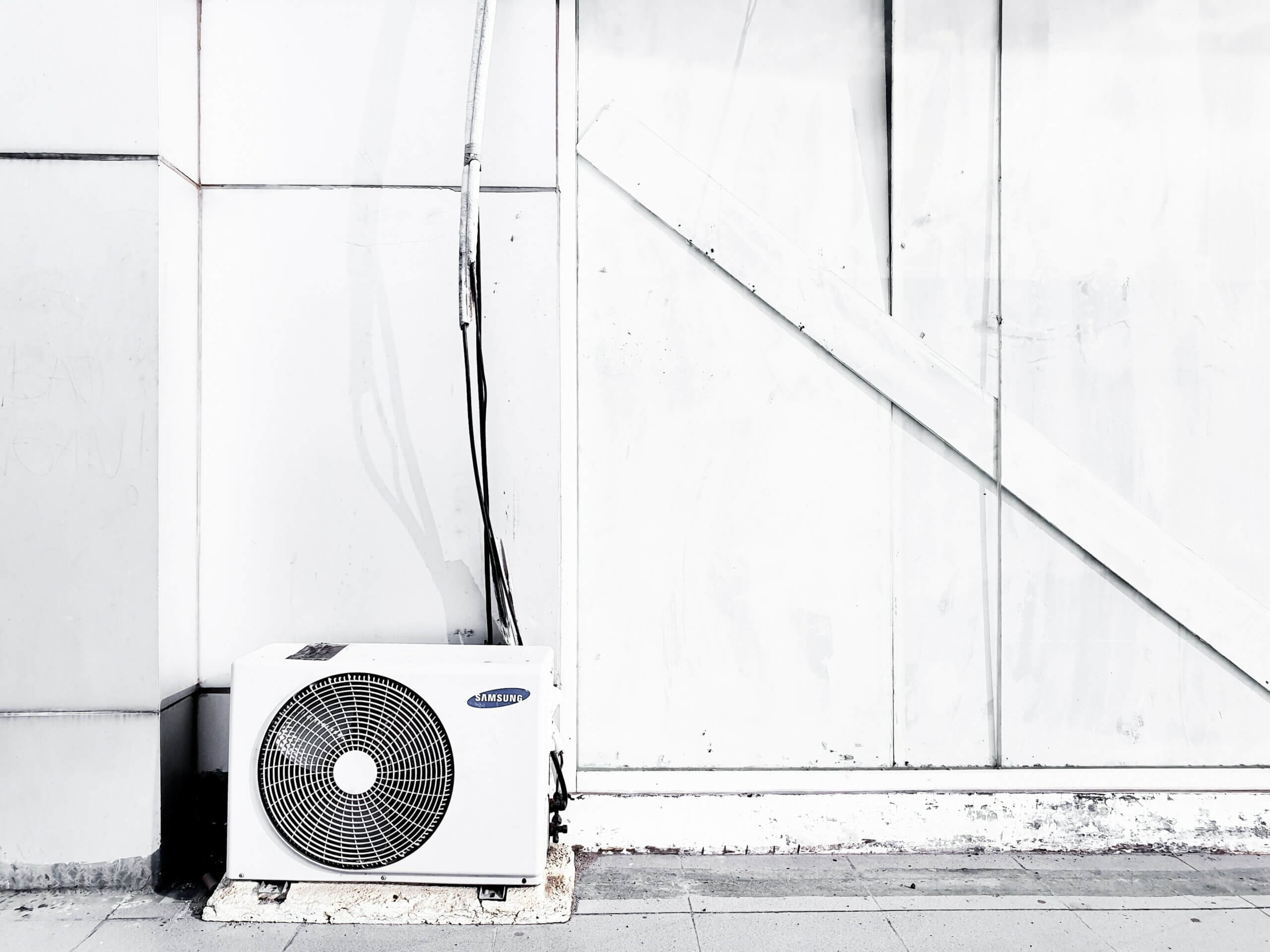When it comes to staying cool and comfortable during the sweltering summer months, a reliable air conditioning system is essential. One option gaining popularity is the mini split air conditioner. Before getting one, however, you should understand first what it takes to own this type of appliance.
In this blog post, Jolly Plumbing, Drains, Heating, & Air will explore the key factors to consider before a mini split air conditioner installation project. We are a trusted home service company in the Cincinnati and Northern Kentucky area, offering complete HVAC and plumbing services. Keep reading to learn more! You can also contact us to learn more about what we do.
Understanding Mini Split Air Conditioners
Before investing in a mini split air conditioning unit, it’s best to first understand what this cooling equipment is, how it functions, and why it’s a worth-it purchase.
What Is a Mini Split AC and How Does It Work?
Mini split air conditioners, also known as ductless systems, consist of two main components: an outdoor unit and one or more indoor units. These systems work by transferring heat from the indoor space to the outdoor unit, effectively cooling the room. Unlike traditional central air conditioning systems, mini splits do not require ductwork, making them a flexible and efficient cooling solution.
Advantages of Mini Split AC Systems
- Precise Temperature Control: Mini split AC systems allow for precise temperature control in individual zones or rooms. Each indoor unit has its own thermostat, allowing you to set different temperatures for different areas of your home. This level of control ensures personalized comfort and energy efficiency by only cooling the spaces that are occupied.
- Energy Efficiency: Mini split ACs are known for their energy efficiency. Since they don’t require ductwork, which can lead to energy loss, they minimize wasted energy. Additionally, the ability to cool specific zones or rooms rather than the entire house helps reduce energy consumption. Energy-efficient models with high Seasonal Energy Efficiency Ratio (SEER) ratings can result in significant long-term energy savings, making them environmentally friendly and cost-effective.
- Improved Indoor Air Quality: Traditional HVAC systems with ductwork can accumulate dust, allergens, and other pollutants, which then circulate throughout the house. Mini split ACs, on the other hand, use individual air handlers in each room, eliminating the need for ductwork. This reduces the chances of airborne pollutants spreading throughout your home.
- Quiet Operation: Mini split ACs are known for their quiet operation. The noisy components, such as the compressor and condenser, are located outside the house, reducing indoor noise levels significantly. This makes mini split ACs a great choice for bedrooms, offices, or any other area where a quiet environment is desired.
Factors To Consider Before Choosing a Mini Split AC
Before selecting a mini split AC system, it’s important to consider factors such as the size and layout of your space, your cooling requirements, and your budget. Evaluating these aspects will help you choose a system that best meets your needs and maximizes energy efficiency.
Selecting the Right Mini Split AC for Your Home
If a mini split AC seems to be the most appropriate cooling system for your home, how do you choose one of the best among the many brands and models available? Here are a few factors to consider.
Determining the Cooling Capacity Required for Your Space
Calculating the cooling capacity, measured in British Thermal Units (BTUs), needed for your space is crucial. Factors like room size, insulation, and the number of occupants influence the cooling capacity required. Oversized or undersized systems can lead to inefficiency and discomfort, so it’s essential to consult a professional like us for accurate calculations.
Energy Efficiency Ratings and Their Importance
When choosing a mini split AC, pay attention to energy efficiency ratings. SEER measures the cooling efficiency, while the Heating Seasonal Performance Factor (HSPF) indicates the heating efficiency. Higher SEER and HSPF ratings denote more optimized energy use, resulting in long-term savings and environmental benefits.
Choosing the Appropriate Size and Model for Your Needs
Consider the specific features and functions offered by different mini split AC models. When it comes to “size,” we’re referring to the cooling capacity. Make sure to get one that has enough capacity to cool your interiors comfortably.
In terms of models, some may offer additional features like smart controls, advanced filtration systems, or customizable airflow options. Evaluate your preferences and requirements to select a model that suits your lifestyle while also providing optimal comfort.
Preparing for Installation
Now that you have decided on which unit to purchase, the next step is to prepare for the mini split air conditioner installation. Here’s what you need to do.
Assessing the Suitability of Your Home for a Mini Split AC
Ensure that your home is suitable for a mini split AC installation. Factors such as available wall space, electrical access, and structural requirements play a crucial role. To help accurately determine the feasibility of an installation and identify any necessary modifications, talk to professionals with experience in cooling systems, like us!
Deciding on the Ideal Location for Indoor and Outdoor Units
Choosing the right placement for indoor and outdoor units is vital for optimal performance. Factors such as air circulation, noise levels, and aesthetics should be considered. Our expert contracts can guide you through the process, taking into account these factors and ensuring the best placement for your units.
Preparing the Necessary Electrical and Structural Requirements
Mini split AC installations require appropriate electrical wiring and structural support. Depending on the system’s capacity and location, electrical upgrades may be necessary as well. That’s why it’s important to consult with an electrician or HVAC experts. This practice also ensures compliance with local building codes and guarantees a safe and successful installation.
Hiring a Professional for Installation
To proceed with your mini split AC set-up, you need professionals that specialize in cooling system services. Here are some points to consider before partnering with one.
Importance of Professional Installation for Mini Split ACs
While some homeowners may attempt DIY installations, we highly recommended hiring a professional HVAC contractor for mini split AC installations. Experts like us have the knowledge, experience, and tools to ensure a proper installation, minimizing the risk of errors and potential damage to the system. Additionally, professional installation often comes with warranties and guarantees, providing peace of mind.
Researching and Selecting a Reputable HVAC Contractor
Take the time to research and select a reputable HVAC contractor with expertise in mini split AC installations. Read customer reviews, check credentials and certifications, and inquire about warranties and after-sales services.
Understanding the Installation Process and Timeline
Before installation begins, it’s essential to understand the installation process and timeline. A professional contractor will assess your space, finalize the placement of indoor and outdoor units, make necessary electrical connections, and test the system for functionality. The duration of the installation may vary depending on the complexity of the project, but your contractor should provide you with a clear timeline.
Post-Installation Maintenance and Care
Now that your unit is up and running, there are certain steps you need to take to ensure its long-lasting operation and efficient functioning.
Regular Cleaning and Maintenance Tasks
To ensure optimal performance and longevity of your mini split AC system, regular cleaning and maintenance are necessary. We recommend cleaning or replacing air filters regularly, keeping the indoor and outdoor units free from debris, and checking for any signs of wear or damage. Following the manufacturer’s maintenance guidelines will also help maintain the system’s efficiency.
Scheduling Professional Maintenance Services
While some maintenance tasks can be done by homeowners, scheduling professional maintenance services is crucial. Professional technicians like us can inspect and tune up the system, identify any potential issues, and perform necessary repairs or adjustments. Regular maintenance will enhance the system’s performance, improve energy efficiency, and prolong its lifespan.
Troubleshooting Common Issues and When To Call for Repairs
When you encounter issues with your mini split AC, it’s important to troubleshoot the problem. Refer to the manufacturer’s troubleshooting guide to get started. If the issue persists or if there are signs of a more significant problem, we recommend calling for professional help to prevent further damage.
Final Thoughts
Installing a mini split AC requires careful consideration and professional expertise to ensure optimal performance and longevity. By understanding the basics of mini split ACs, selecting the right system for your needs, preparing for installation, and scheduling regular maintenance, you can enjoy a cool and comfortable living environment.
When it comes to mini split AC installation and maintenance services in the Cincinnati and Northern Kentucky area, Jolly Plumbing, Drains, Heating, & Air is the trusted choice. Our team of skilled professionals is dedicated to providing top-quality services and ensuring customer satisfaction. Contact us today for all your mini split AC needs!




